Do you want to improve your web presence by building a high-converting website that persuade website visitors to become loyal customers?
In this blog post, we’ll discuss the best practices to plan and design a website, and the essential elements to consider for increasing your website’s revenue.
You need to understand, first, that today’s digital landscape has made it essential for businesses to have a robust online presence.
First impression is everything, and your website is your perspective customer’s primary form to learn and interact with a business online.
Hence, a well-planned website can work as the heart of your business’s online existence. A conversion-optimized website will ensure a web presence that can drive maximum leads and sales.
According to the studies, the UI/UX design of a website has 75% influence on its credibility, and 94% of people judge sites only on how responsive they are on mobile devices. Considering the stats, it is evident that website design has become so integral that customers can conclude on a business’s legitimacy by glancing over it.
Web Designing and Its Importance in Today’s Competitive Industry
Web design encompasses almost everything about your website, from how it looks to the way it works.
Want some more clarity on what exactly web design is? It is all about planning and designing your website’s looks and how you want your potential users to behave on it.
In a nutshell, web design include planning the architecture, layout, designing the UI/UX, and building the website’s front-end.
It requires a combination of creative and technical skills, including business analysis, UX/UI design, graphic design, front-end technologies, and more, to design a website.
A website is the digital reflection of your brand and everything that it stands for. Your website elements need to be carefully picked and aligned, including your logo, color pallets, typography, images etc.
Top 8 Tactics to Build a Conversion-optimized Website
Many websites have a lot of traffic but very few conversions. However, every website is designed to encourage visitors to convert (buy, contact, subscribe, and more). Here are some key elements that will help create a website with higher conversion rate.
Audience Research
The better you know your audience, the more likely your site will catch their attention and appeal to them. According to Entrepreneur research, 70% of websites fall flat because they fail to connect with their target audience.
So, if you want high conversions on your site, you need to address the right audience. You can use tools like Google Keyword Planner, SEMrush, Uber Suggest, and others to conduct research and analysis for your website.
Always research and learn about your audience on factors like what they want, expect from the website, pain points, behavior, goals, demographics, and other industry-specific factors. This well help you plan your website with better engagement and improved buyer’s journey.
You can make versed decisions in terms of colors, tone of voice, typefaces, graphics, and other elements, based on your business vertical.
Architecture and Navigation
I have seen many of our clients with websites that do not have pages for their audience, and still trying to target them.
Conceptualize showcasing your products, solutions, services, case studies, partnerships, and other information that can add value to your website’s visitors, before designing it.
You should plan landing pages for each content type and make them available to your users in the navigation for their ease of access.
This helps educate and engage your users with information about your business they might not think while landing on your website.
Attention-Grabbing Homepage
Your website’s homepage is the face of your business.
When people come to visit your site through brand query and other ways, the first page they land on and see is your homepage.
For many businesses, it’s the page on the website that sees the most traffic compared to other pages. So, your homepage should be aesthetically pleasing to your visitors and navigate through.
According to Hosting Tribunal:
- 52% of visitors want to see company’s business information on the homepage
- 36% of customers click on logos to reach the index page
- 70% of small businesses don’t have CTAs on the homepage
- 64% of users want company’s contact information on the domain
I believe above stats gives you an insight on user behavior and help plan the vital elements to boost conversion.
Brand Consistency
Your brand’s story connects people to the offered solutions, products, and services.
Consistency is the key to better usability and enhanced user experience. Combining both makes your users feel more familiar with your brand. Web designing with consistency is a must for user’s emotional and cognitive aspects.
Ensuring brand consistency with style guides, pattern libraries, CSS frameworks, and more can help you gain traction with your target audience, strengthen your online presence, set you apart, and give your brand a competitive edge.
Mobile Responsive Design
The whole world stood in awe when former Google CEO Eric Schmidt announced that designers must put the mobile-first rule in web design.
According to the Market Share, Google properties drives 94%+ mobile search traffic and recommends responsive design as a best practice. So, it becomes crucial for your business to design a website that is mobile responsive.
Responsive design has a fluid and flexible layout that looks perfect on mobile devices and adjusts as per the display size. Moreover, a mobile responsive site gives your users the most consistent experience and increases your site’s visibility on search engines.
High-Converting Landing Pages
Well-optimized landing pages can capture more promising leads.
According to HubSpot, businesses that create 30 or more landing pages get seven times more leads than those that use only 1 to 5. Thus, it becomes crucial to create as many landing pages that capture conversion rate optimization.
A killer headline, compelling subheads, attention-grabbing images, effective message-conveying copy, understanding users’ pain-points, features and benefits outlined, testimonials and other social proofs, and more can help you create high-converting landing pages while designing a website.
Simple, Clear, and Relevant CTAs
UX experts advise that all your crucial web pages, such as landing pages, should have tailored messages and clear calls-to-actions (CTAs) for goal accomplishment. A simple, clear, relevant, and attention-drawing CTAs can increase your conversion rate, expand your customer base, and significantly impact your business’s revenue.
The best practice for CTA includes visually appealing colors and copy that incorporate action-driven words. CTA copies should be simple, clear, and concise yet persuasive. Besides, you should incorporate CTAs on multiple sections, and emphasize text, design, and placement to achieve greater success.
Also read: Website Launch Checklist: 15+ Things to Check Before Website Launch
Smart Use of Whitespace
Whitespace is an integral part of web designing. It helps improve readability, user engagement with the content sections, and the website’s performance. Yet, it is the most overlooked and underused element while making up a great web layout.
By following the ‘less is more’ and ‘make it simple’ concept while using whitespace, you can deliver an enjoyable experience on the web as well as give your website the simple, clean, minimalist, and elegant look and feel.
Valuable Content
Every digital marketer uses the phrase “Content is King.”
A website packed with relevant, informative, and valuable content always stands out and stays ahead of the competitors. High-value content helps your users and establishes you as an authoritative voice in your industry.
Creating and sharing valuable content regularly on your website is a great practice. Ensure writing valuable content to convey your brand messages to your users. With time, it becomes a go-to source of information for your audience and entices them to come back to your site, resulting in boosting conversions.
Final Words
Designing a website that is easy to navigate, leaves good impression on your customers, and drives maximum leads and sales is considered a successful website. Hopefully, all the components discussed above, including mobile responsive design, relevant CTAs, compelling landing pages, and more, will help you design a website that can turn your visitors into potential customers.


